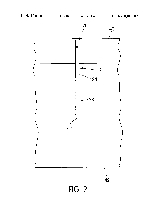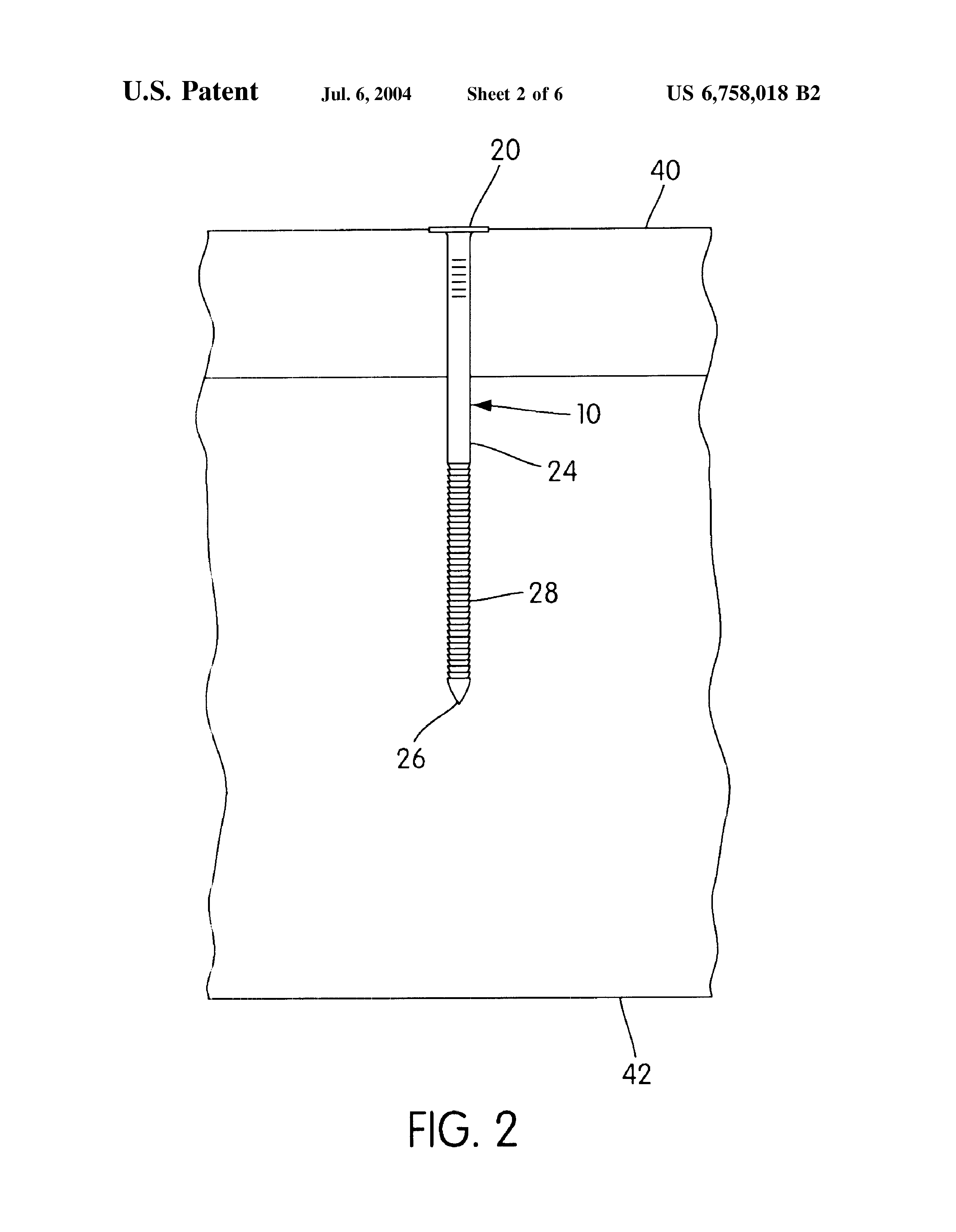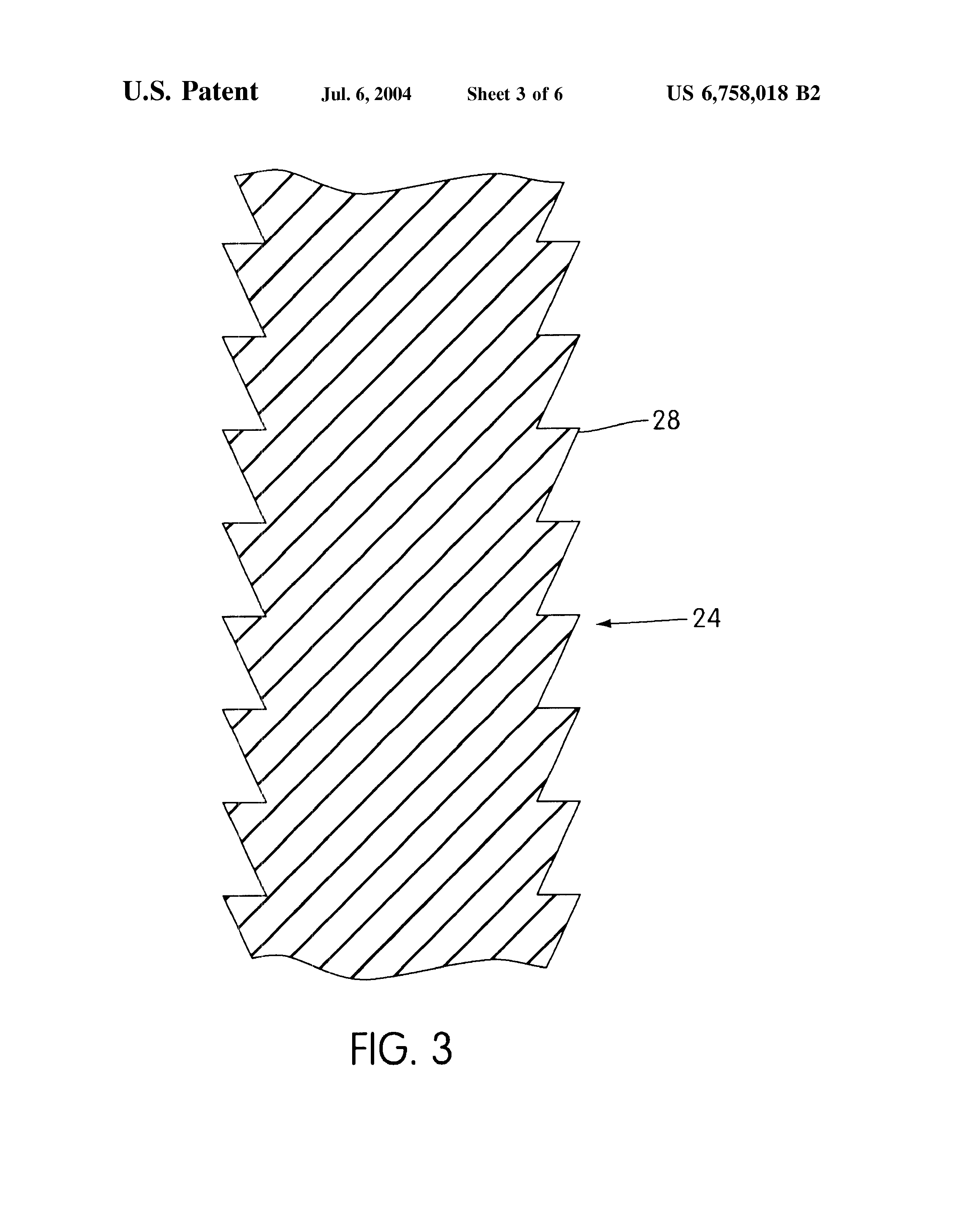
HurriQuake
Encyclopedia

Bostitch
Stanley Bostitch, previously and more commonly known as simply Bostitch, is an American company that specializes in the design and manufacture of fastening tools—such as staplers, staple guns, nailers, riveters, and glue guns—and fasteners—such as nails, screws, and staples. Its product range...
, a division of Stanley Works
Stanley Works
Stanley Black & Decker , formerly known as The Stanley Works, is a manufacturer of tools and hardware and provider of security products and locks headquartered in New Britain, Connecticut...
, and patented in 2004. The features of the nail are designed primarily to provide more structural integrity for a building, especially against the forces of hurricanes and earthquake
Earthquake
An earthquake is the result of a sudden release of energy in the Earth's crust that creates seismic waves. The seismicity, seismism or seismic activity of an area refers to the frequency, type and size of earthquakes experienced over a period of time...
s.
Features

Pre-development
The nail's design began when its inventor, civil engineerCivil engineering
Civil engineering is a professional engineering discipline that deals with the design, construction, and maintenance of the physical and naturally built environment, including works like roads, bridges, canals, dams, and buildings...
Ed Sutt, traveled to the Caribbean
Caribbean
The Caribbean is a crescent-shaped group of islands more than 2,000 miles long separating the Gulf of Mexico and the Caribbean Sea, to the west and south, from the Atlantic Ocean, to the east and north...
in the wake of Hurricane Marilyn
Hurricane Marilyn
Hurricane Marilyn was the fifteenth tropical depression and thirteenth named storm of the unusually busy 1995 Atlantic hurricane season, following closely on the heels of Hurricane Luis. Hurricane Marilyn was the most powerful storm to hit the Virgin Islands since Hurricane Hugo of 1989.Marilyn...
. Sutt's trip to the Caribbean was part of a team examining the wreckage of the 80% of the island's homes and business that had been destroyed in the hurricane's winds of 95 mph (155 km/h). The finding among the homes that had been destroyed was that wood failure was not the cause of destruction; instead, the findings showed that the nails holding the wood together had failed, leading to the buildings' ultimate collapse. Sutt's research began after taking a research assistantship program at the Clemson Wind Load Test Facility, which had received funding through a grant from FEMA
Federal Emergency Management Agency
The Federal Emergency Management Agency is an agency of the United States Department of Homeland Security, initially created by Presidential Reorganization Plan No. 1 of 1978 and implemented by two Executive Orders...
. The grant was used to research wooden-framed structures and the relationship of their failure to wind velocity. The outcome of the project's research showed that the best way to strengthen a structure was to improve the fasteners that held the roof
Roof
A roof is the covering on the uppermost part of a building. A roof protects the building and its contents from the effects of weather. Structures that require roofs range from a letter box to a cathedral or stadium, dwellings being the most numerous....
ing and wall sheathing to the internal frame, and with this information Sutt signed on as a fastener engineer for the Stanley subsidiary, Bostitch
Bostitch
Stanley Bostitch, previously and more commonly known as simply Bostitch, is an American company that specializes in the design and manufacture of fastening tools—such as staplers, staple guns, nailers, riveters, and glue guns—and fasteners—such as nails, screws, and staples. Its product range...
.
Development
As development began on the nail, there were three major causes of failure to be overcome. These were having the nail — head and all — rip through the sheathing, having the entire nail pull out of the frame, and having the nail's midsection snap under stress. Early research showed that the larger the head, the less chance there was of the nail being ripped through the sheathing. However, the difficult task was increasing the nail's head while still making it compatible with popular nail gunNail gun
A nail gun, nailgun or nailer is a type of tool used to drive nails into wood or some other kind of material. It is usually driven by electromagnetism, compressed air , highly flammable gases such as butane or propane, or, for powder-actuated tools, a small explosive charge...
models. After finding the ideal nail head size, the next task to conquer was preventing the entire nail from pulling out of the frame. This was overcome by adding barbed ring shanks around the lower portion of the nail. During the testing of the shanks, it was noted that above a certain point the shanks no longer strengthened the nail but instead weakened the nail by making it more susceptible to shearing. The final touch to the original prototype was a special high-carbon alloy designed by a metallurgist
Metallurgy
Metallurgy is a domain of materials science that studies the physical and chemical behavior of metallic elements, their intermetallic compounds, and their mixtures, which are called alloys. It is also the technology of metals: the way in which science is applied to their practical use...
that had the perfect combination of stiffness and pliability, giving it the highest possible strength.
Sheather plus and beyond
After analyzing hundreds of designs, and finally coming up with what was believed to be the best design, Bostich finally released the nail in 2005 and labeled it the Sheather Plus. Even though the new nail was stronger than most nails, the barbs, which added the much needed strength to the nail's holding power, weakened the strength of the joint by opening the hole too far. This caused the joint to be sloppy and wobbly, so the team went back to the drawing board where the final feature was added to the nail. To compensate for the extra width of the nail hole, due to the ring shanks, Sutt decided to add a thicker screw-shank to the portion of the nail directly under the head. This addition thickened the top portion of the nail giving it a tighter joint, as well as enhancing its overall holding power.Testing
Independent tests of the nail's stretch were conducted by several organizations, including Florida International UniversityFlorida International University
Florida International University is an American public research university in metropolitan Miami, Florida, in the United States, with its main campus in University Park...
and the International Code Council
International code council
The International Code Council , a membership association dedicated to building safety, fire prevention and energy efficiency, develops the codes used to construct residential and commercial buildings, including homes and schools. Most U.S. cities, counties and states that adopt codes choose the...
. Those tests confirmed what the researchers at Bostitch had claimed, that they had created a better nail. Among all of the different tests, it was found that the new nail had twice the "uplift capacity" of other power driven nails, as well as doubling a home's resistance to wind and increasing earthquake resistance by up to 50%. For further testing, Sutt asked for the assistance of Scott Schiff, the coordinator of the graduate program in civil engineering and engineering mechanics at Clemson University
Clemson University
Clemson University is an American public, coeducational, land-grant, sea-grant, research university located in Clemson, South Carolina, United States....
. Tests at the Clemson Wind Load Test Facility confirmed what had already been stated. With equipment to simulate the force of winds, roofs attached with traditional nails were pulled apart at around 13,500 pounds of force (60.1 kN). At forces up to 16,000 pounds (71 kN), walls built with the HurriQuake environment nail showed minimal wall movement. As the pressure increased to 17,000 pounds (75 kN), then 18,000 (80 kN), then 19,000 (85 kN), the walls began to make creaking and groaning noises but they still stayed attached. As the test rig pushed 20,000 pounds (89 kN), the maximum it was capable of testing, it gave out, showing that the HurriQuake environment nail sustained 20,000 pounds of force (89 kN) and still was not sheared or completely pulled out.
Awards
The Hurriquake won the Popular SciencePopular Science
Popular Science is an American monthly magazine founded in 1872 carrying articles for the general reader on science and technology subjects. Popular Science has won over 58 awards, including the ASME awards for its journalistic excellence in both 2003 and 2004...
Best of What's New 2006 award for Home Technology and was honored as the grand award winner for Best Innovation of the Year.
External links
- "USPTO Full-Text Patent and Image Database": Simple search on the USPTO patent database. Enter 6758018 into Term 1 and select Patent Number from the Field 1 dropdown.

